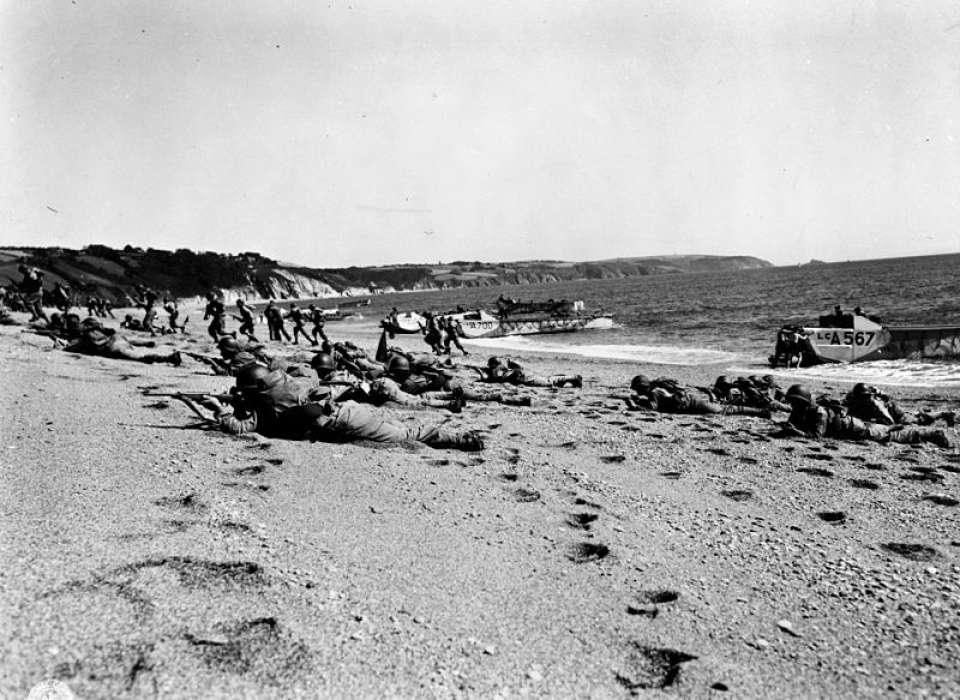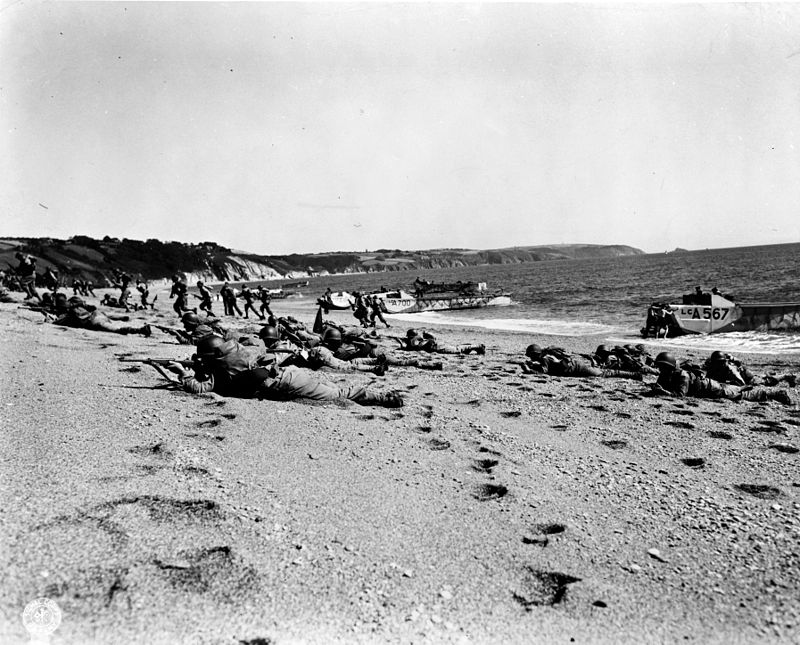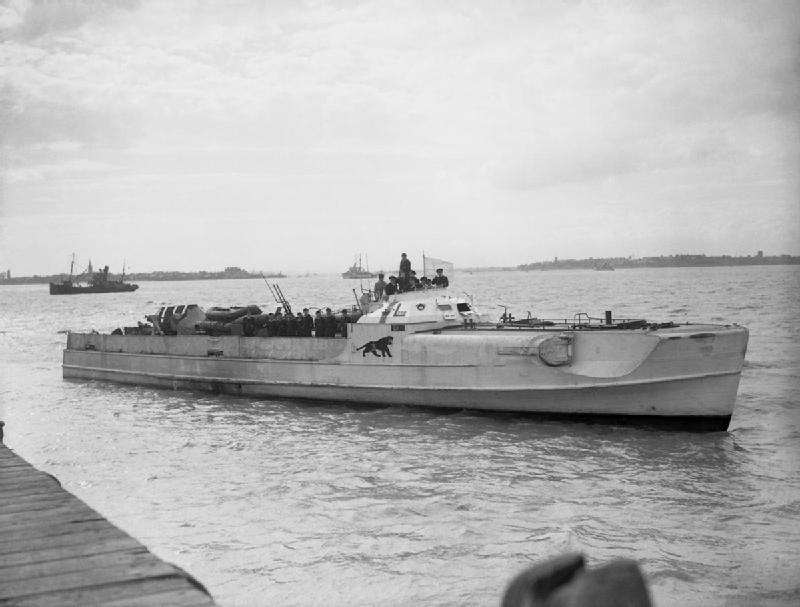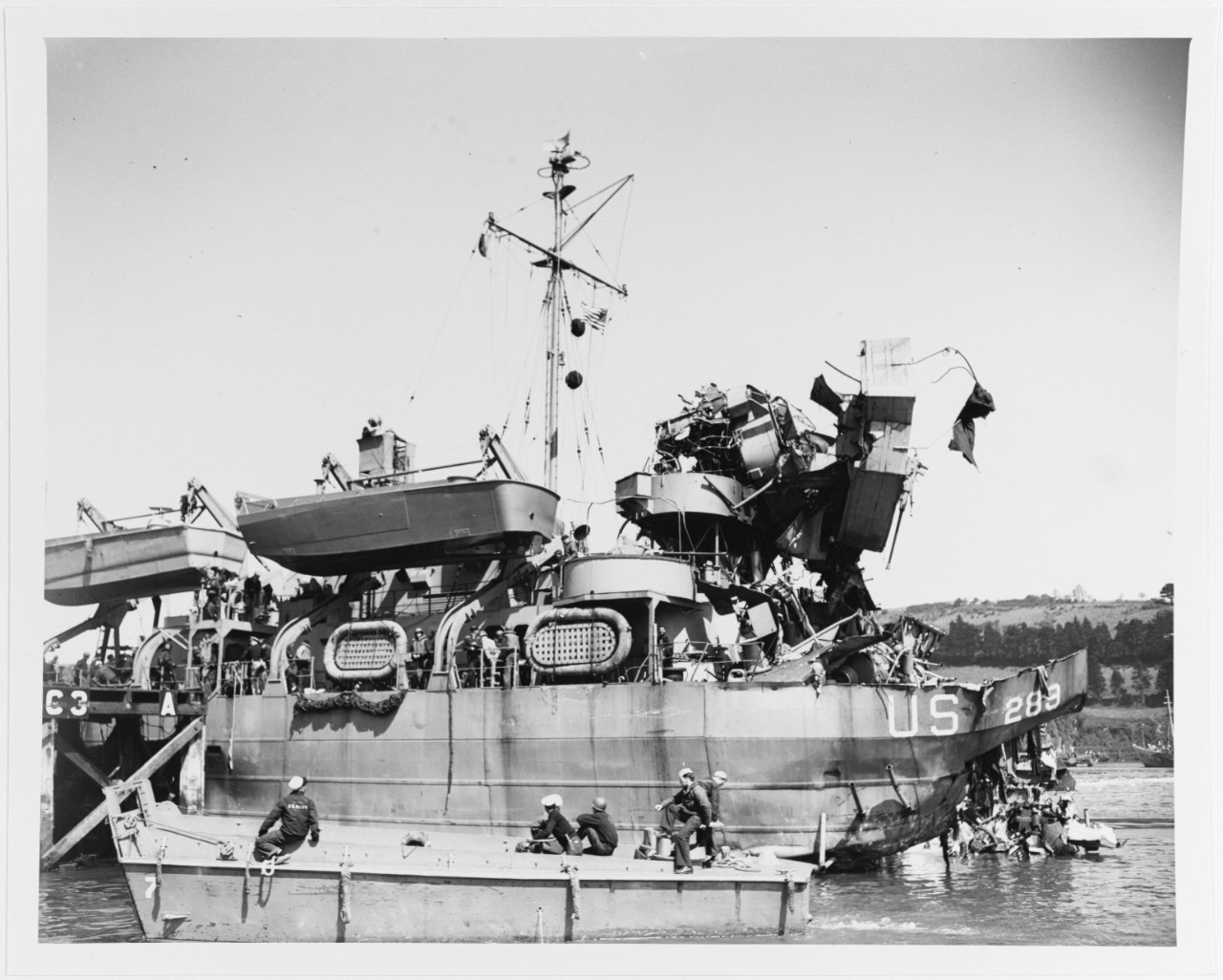The ancient Romans knew what it took to win battles. You had to practice, practice, practice.
Jewish historian Flavius Josephus fought against Rome, and he noted how calm and well-ordered Roman troops were in combat, no matter what manner of shocking events were transpiring on the battlefield. He traced that sense of order back to their training. Roman training was tough and realistic. It was dangerous, and men got hurt. It was so similar to actual battle, in fact, that Josephus marveled at the result, calling Roman exercises “unbloody battles,” and their battles “bloody exercises.”
That is perhaps a good way to begin thinking about what happened in the waters of Lyme Bay off the Devon coast on April 28, 1944. Students of World War II will note the date: fewer than six weeks before the big Allied landing in Normandy. US and British troops were doing what you might expect: practicing. Operation Overlord was one of the most complex military undertakings of all time, and the Allies still had a lot of details to work out: shipping schedules, radio and communications procedures, and handling of unwieldy landing craft of various types, like the big “Landing Ship, Tank” (LSTs, as they were known.) No one had ever done an amphibious operation on this size and scale before, and any prudent commander would want to drill his men until they could do the right thing in their sleep.
April saw the Allies staging Operation Tiger, a simulated amphibious landing at Slapton Sands, a stretch of British coastline chosen for its rough similarity to Normandy. For the practice run, the largest pre-Overlord landing exercise, Allied engineers had converted the Sands into a German-style defensive position: barbed wire, machine gun nests, heavy bunkers. Things were as realistic as they could be, including the fog of war and the tendency of modern military operations to have more than their fair share of chaos. Tiger was a multi-day exercise, and it had already seen its share of SNAFUs. The day before, on April 27, for example, timing problems had led to US Higgins boats landing on beaches under the direct fire of British ships from the Royal Navy. Heavy casualties resulted.
American soldiers staging a mock assault of Slapton Sands in training for the invasion of Normandy. Courtesy of the Library of Congress.
Much worse was to follow, and the source of the trouble came from the one factor you should never forget: the enemy.
The Germans didn’t have much of a navy left by 1944. The big units were gone: Bismarck sunk in May 1941; sister-ship Tirpitz currently holed up in the distant Norwegian fjords; Scharnhorstat the bottom of the waters off North Cape. The Kriegsmarine could still put light craft to sea, however: “fast boats” (Schnellboote in German, or sometimes S-Boats.) They were pesky and fast and carried a real sting in the form of torpedoes and 40mm guns: the German equivalent of US PT boats.
The Germans had been monitoring allied training exercises for a while now. Luftwaffe reconnaissance flights had identified a concentrated mass of some 300 ships around Porstmouth, hundreds of supply trucks gathered at Spithead, and Allied landing craft at Pagham, Chichester, and Exbury. It all added up to “actionable intelligence” for the Admiralty in Berlin. German military intelligence won few laurels in World War II, but it was on target this time.
Allied Convoy T-4, containing eight lumbering LSTs, put to sea just after midnight, and soon ran into problems of its own. Two escort ships were supposed to be present, but one, the Scimitar, soon put into port for repairs. Left alone to guard the convoy was a 200-foot corvette called the Azalea. British troops ashore were monitoring the S-Boats, but unfortunately, they were operating on a different radio frequency than the convoy. Azalea, a British vessel, got the information about the German boats, but assumed that the American LSTs had received the same reports and were taking precautions.
The American ships had no idea that German ships were gunning for them until it was too late. As tracer rounds and 40mm gunfire filled the night air, surprise was total. And then came the explosions: a torpedo struck LST-507; another two LST-531, and yet another LST-289. The first two ships were literally torn apart and sank almost immediately; the next managed to stay afloat, barely. LSTs had all the maneuverability of a floating warehouse. “Evasive action” was not in their operational vocabulary; and even they had been more nimble, it had all happened so fast.
Loss of life was horrific: a later count would put the number at 749 American soldiers and sailors. One crew member on LST 515—whose skipper turned his ship around and ordered his men to aid their countrymen in the water—later recalled that, “you could walk across the dead bodies in the water.” Operation Tiger was a disaster, so bad that the Allied forces hushed it up. Why let the Germans know too many details about their successful attack? And what Allied soldier in his right mind would want to take part in the Normandy landing, knowing about this grisly catastrophe just a few weeks previously?
Certainly, we can point to lessons learned. It was plain that the Allies needed better life preservers, improved radio procedures, and smoother inter-Allied cooperation. Eisenhower and his staff made sure of all these things when launching the real thing on June 6. Such lessons, however, were fairly mundane ones, and could well have been learned without such a tremendous loss of life.
Lessons learned or not, even the Romans—with their penchant for high-intensity, violent, and dangerous training—might well have recoiled at the cost of this one.

My Father's D-Day: Family Legacies from the Normandy Invasion
Career newspaper photographer Eliot Kamenitz reflects on his father’s role as a glider pilot on D-Day and in two other military actions in Europe, and the pivotal importance of the D-Day experience in his father’s life.
Robert Citino, PhD
Robert Citino, PhD, is the former Samuel Zemurray Stone Senior Historian in the Jenny Craig Institute for the Study of War and Democracy.
Cite this article:
MLA Citation:
APA Citation:
Chicago Style Citation:








![Max Fuchs, New York City cantor, sings as Rabbi Sydney [sic] Lefkowitz, Richmond, VA, conducts the first Jewish services from Germany.](/sites/default/files/styles/max_650x650/public/2025-10/image1.jpg)



